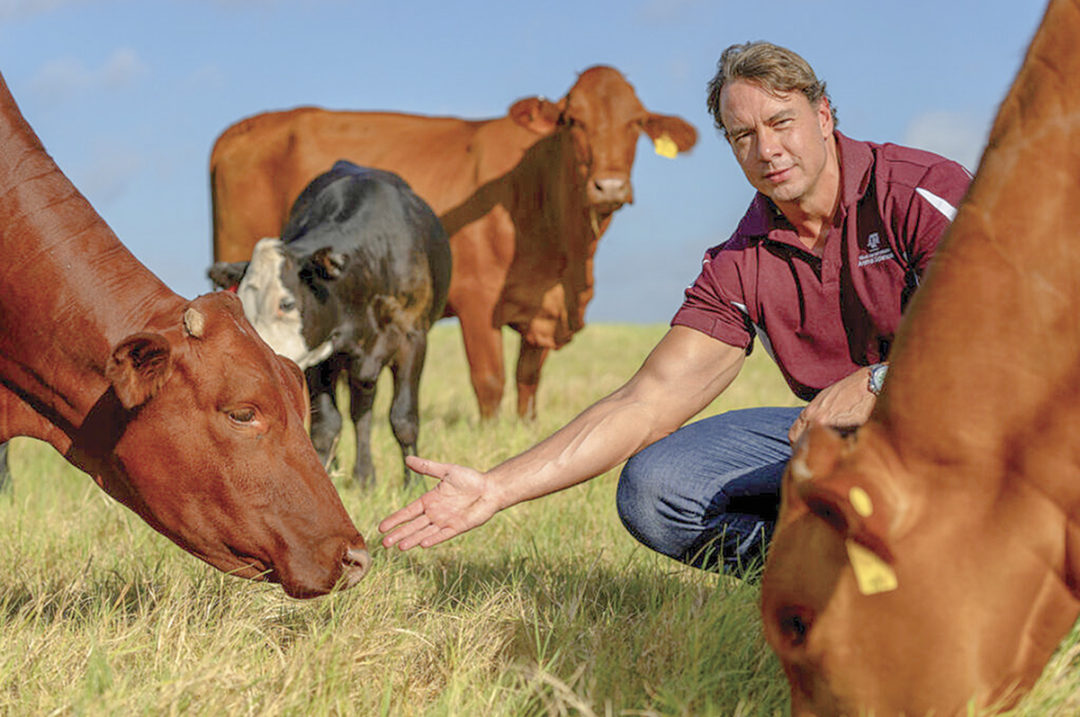Utilizing omega-6 fatty acids as a management strategy to mitigate early embryonic loss, a major cause of reproductive and economic losses to the U.S. beef industry, is the focus of a new project led by Texas A&M AgriLife Research researchers. The project is headed up by Reinaldo Cooke, a professor of beef cattle research with Texas A&M, and will be funded by the USDA’s National Institute of Food and Agriculture (NIFA).
Omega-6 fatty acids have long been touted as essential fatty acids in human health and are typically derived from vegetable oils, seeds and nuts. The A&M researchers believe the same fatty acids could be an important management tool in cattle pregnancies. Of particular interest is the first four weeks of gestation when the vast majority of pregnancy losses occur.
Reproductive failure is an important limiting factor in cow-calf productivity, and pregnancy loss has been recognized as one of the top reproductive challenges in the industry. Losses that occur in the first 28 days of gestation are termed as early embryonic loss.
“Our group provided evidence that supplementing beef cows with a lipid source rich in omega-6 fatty acids during the early embryonic period increased pregnancy success by promoting conceptus development, establishment and maintenance of the pregnancy,” Cooke said in a Texas A&M AgriLife Research release.
Cooke said those findings differed from the long-held belief in the dairy industry that omega-6 fatty acids are detrimental to early pregnancy. Therefore, Cooke said, the mechanisms by which omega-6 fatty acids improved pregnancy success warrant full clarification.
“We need to provide biological support to nutritional interventions that minimize early embryonic loss,” he said.
A major part of the project will be to try to determine the optimal nutritional additives to provide beef cattle during the breeding season. Omega-6 fatty acids act as an inflammatory and have been fed in beef cattle diets, but the industry needs answers as to how much is too much. Omega-3 fatty acids, on the other hand, have the opposite effect as an anti-inflammatory and are not commonly fed to beef cattle, so there are no data.
“We want to answer questions of how much omega-6 is too much; that’s the first project,” Cooke said. “The second project is comparing the two, using the dose of omega-6 that we know works and then see[ing] if omega-3 has complementary effects.”
The body’s healing process is aided by inflammation, which stimulates the growth of certain cells and body reactions. So, in the group’s research, they are looking to determine how much is just enough to add fuel for embryo growth and positive pregnancy development. Dairy cow diets generally include high amounts of fat, so high levels of omega-6 in their feed often produce negative reproductive effects. But in beef cattle, it’s unknown how much is too much.
“The omega-6 fuels the embryo to develop,” said Cooke. “But if we increase the omega-6 to a higher level, will the reproductive effects be negative as in the dairy industry? It may cause too much inflammation. And then, if we know how much omega-6 is good, how does that compare to omega-3 at different rates?”
The hope is to find out whether there are complementary effects between the two.










